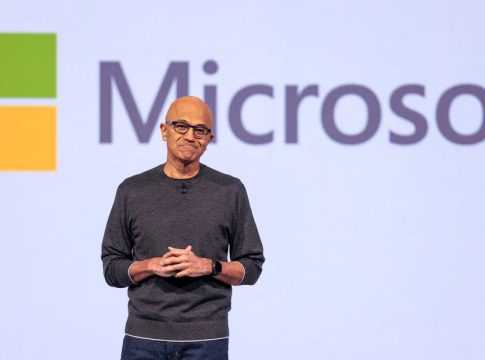Navigating the AI Revolution in the Workplace
As artificial intelligence (AI) rapidly evolves, the main hurdle for companies isn’t the technology itself but rather the human factor involved in changing workflows. Microsoft CEO Satya Nadella recently articulated this challenge, emphasizing that the integration of AI into everyday tasks requires a fundamental shift in how people work.
The Shift in Workforce Dynamics
In a recent discussion with Y Combinator, Nadella expressed that adapting to AI won’t merely mean incorporating advanced tools, but also redefining existing roles. “The scope of your job is going to change,” he noted. This belief is particularly evident in Microsoft’s LinkedIn, where new roles are emerging—such as the “full-stack builder”—that amalgamate various functions like product design and management into a single position. Such changes reflect a broader trend: a reorganization of team structures in response to technology.
Microsoft’s significant job cuts—around 6,000 positions—highlight the ongoing shift within the company, aiming to streamline management and bolster its tech workforce. While less than 3% of its global workforce, these cuts illustrate a departure from traditional roles towards a more agile, tech-focused approach.
The Great AI Debate: Job Creation vs. Job Loss
The question of whether AI will generate new jobs or lead to widespread unemployment remains hotly debated among industry leaders. Jensen Huang, CEO of Nvidia, asserts that AI will transform every aspect of work, creating new creative opportunities even as some roles fade away. Conversely, Dario Amodei of AI startup Anthropic warns that as many as 50% of entry-level white-collar jobs could vanish within the next five years, casting a shadow over the optimistic possibilities posed by AI advancements.
Companies are urging employees at all levels to embrace these changes. For instance, Amazon’s CEO, Andy Jassy, recently encouraged his workforce to actively engage with AI, urging them to educate themselves and experiment with new tools. This push towards AI integration demonstrates a commitment not just to efficiency but to a cultural shift where teamwork and technological adoption go hand in hand.
Understanding the Wider Implications
The implications of these technological transitions extend beyond individual companies; they signify a larger societal shift. Just as the internet transformed the business landscape in the late 1990s, AI heralds a new era where flexibility and innovation are paramount. Teams must now evolve continually to leverage AI’s exponential potential, prompting concerns about how well workers can keep pace.
AI is undeniably repositioning the workplace, blending roles and streamlining processes, while simultaneously instigating debates surrounding job security and workforce viability. As organizations navigate this duality, proactive engagement, reskilling, and a willingness to adapt will be critical for both workers and businesses.
As we stand on the precipice of this AI revolution, the journey ahead will require not just technical ingenuity but also a collective commitment to embracing change, ensuring that no one is left behind in the wake of these advancements.

Writes about personal finance, side hustles, gadgets, and tech innovation.
Bio: Priya specializes in making complex financial and tech topics easy to digest, with experience in fintech and consumer reviews.

